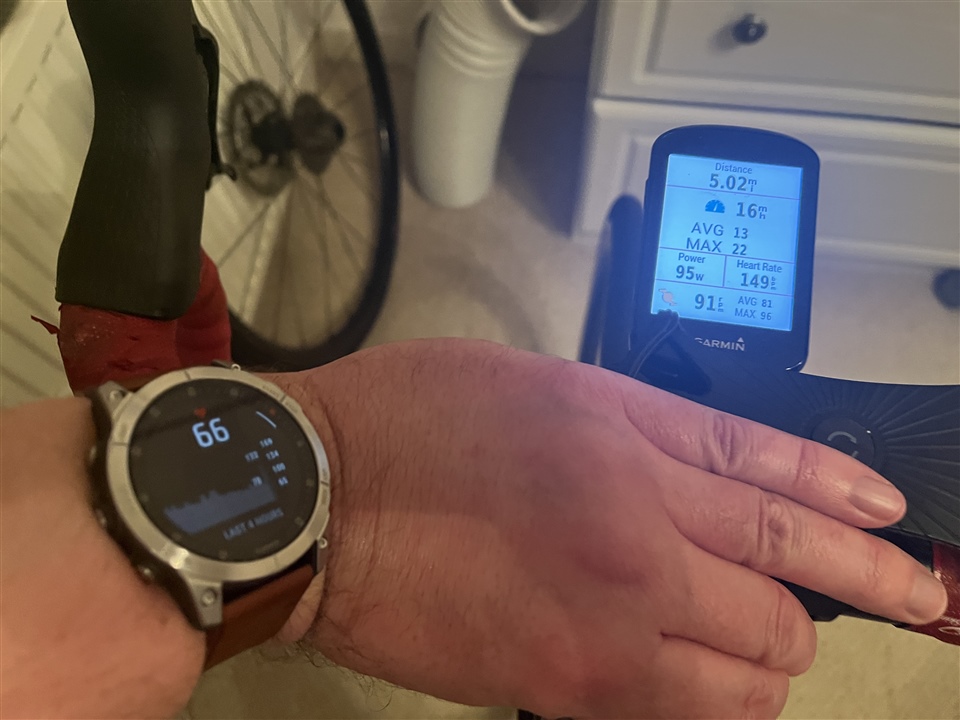The Epix wrist based heart rate readings outside of an activity appear not to be accurate as heart rate increases.
To test I’ve been tracking the Epix heart rate (without starting an activity) against a Polar chest strap (connected to a Garmin bike computer) whilst slowly ramping up effort on a turbo trainer. On a short test I gradually ramped up from 70 bpm to around 150bpm. The wrist heart rate rose very slowly to around 90 bpm and then actually gave up and dropped back down to the mid 60s even though my effort was still increasing. The heart rate monitor (paired to my Garmin bike computer) rose to around 150 bpm as expected.
To stress… this IS NOT an issue with the Epix’s heart rate monitor hardware, because if I start an activity on the watch the heart rate tracks the chest strap heart rate pretty accurately.
The following image shows the difference. Heart rate (from strap and verified by a manual count) was 149, wrist heart rate was showing 66. The data is set to update every second.

What this does do is suggest that the all day heart rate monitoring is not even vaguely accurate as it doesn’t seem to be able to respond to any significant increases in heart rate unless an activity is started.
Can anyone else confirm this? The respiration rate tracking is also not working and so if all day heart rate isn’t accurate either this would be grounds to return the watch I think.


